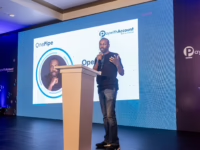Securing funding might seem straightforward-trade effectively and share profits-but the route you take profoundly influences your daily workflow and long-term potential. Funding structures go beyond mere pricing; they function as operational frameworks with distinct guidelines on risk management, payout schedules, scaling opportunities, news event restrictions, and even how maximum losses are calculated (fixed versus trailing). If you’re transitioning from trading your own capital, begin by narrowing down prop firms suited for novices and scrutinize their funding terms carefully. The terminology they use regarding equity drawdowns, payout frequency, and platform prerequisites will reveal the true nature of your trading experience.
Understanding Key Funding Frameworks and Their Practical Impact
- Evaluation or Challenge Model (single or two-step): Demonstrate consistent performance by reaching profit targets within daily or trailing loss limits before moving to a funded account. Advantage: Low initial investment to access larger capital. Drawback: Violating rules like news event restrictions or equity drawdown limits can reset your progress.
- Direct Funding (no challenge phase): Pay a premium upfront to trade live funds immediately. Advantage: Eliminates evaluation stress. Drawback: Higher initial cost and often stricter risk controls.
- Subscription-Based Access: Monthly fees grant access to accounts governed by stringent rules. Advantage: Predictable expenses and rapid account activation. Drawback: Recurring costs can accumulate if trading activity or consistency wanes.
- Scaling Programs: Increase your buying power as you hit profit milestones without breaching rules. Advantage: Encourages disciplined growth. Drawback: Rapid scaling can outpace your psychological readiness-prepare for post-growth volatility.
- Static vs. Trailing Maximum Loss: Static limits offer more flexibility; trailing limits adjust upward with equity gains. Static suits swing or overnight trades better, while trailing safeguards profits and encourages protecting new equity highs.
- Payout Structures: Weekly or biweekly distributions, profit splits (e.g., 80/20+), and minimum withdrawal amounts. Advantage: Regular payouts build confidence. Drawback: Watch for hidden clauses like inactivity penalties or complex verification processes.
Expenses, Regulations, and Fine Print That Influence Your Success
- Actual Trading Costs: Commissions, exchange and data fees, plus slippage often impact profitability more than headline profit splits. Clarify whether fees are passed at cost or marked up.
- Risk Management Transparency: Daily loss limits, total equity drawdown caps, and policies for holding positions overnight or through weekends. Equity acts as the ultimate arbiter-keep it front and center.
- Execution Environment: Platform reliability, order routing efficiency, automatic stop-loss attachments, and symbol restrictions to avoid entry errors.
- News Event Policies: Are you required to close positions before or after major economic releases? If so, integrate these rules into your strategy and expectations.
- Scaling Criteria: Understand what triggers account size increases or reductions. Top programs clearly define tiers, timelines, and review intervals.
- Payout Operations: Processing times, required documentation, and minimum withdrawal thresholds. A seamless back-office operation-quiet but dependable-is invaluable.
- Support and Community: Access to responsive human support via chat or email, plus peer groups focused on practical guidance rather than hype. Constructive feedback accelerates your learning curve.
- Compliance and Verification: Keep identification and proof of address documents ready, understand re-verification schedules, and maintain organized records of statements and payout confirmations.
Aligning Funding Models with Your Trading Style and Schedule
Your trading methodology and available hours should guide your choice of funding model. For part-time traders or students, models offering flexible daily trading windows are essential, as multiple daily sessions may be impractical. Opt for static loss limits with clear overnight rules when switching between trading periods. Event-driven momentum traders must adhere strictly to news event protocols. Choose a model that supports your monthly objectives-such as executing “two high-probability setups within a focused 90-minute London session with a firm 3R daily risk cap”-without friction.
Establish a Consistent Routine to Pass Evaluations
- One Clear Setup, Five Key Elements: Define context, entry trigger, stop-loss, invalidation criteria, and exit plan. If you can’t articulate these succinctly, your trade execution will lack clarity.
- Monitor Equity Closely: Most rule violations stem from equity drawdowns rather than balance alone; set alerts at −2R and enforce a hard stop at −3R.
- Pre-Trade Checklist: Confirm symbol approval, ensure stops auto-attach, verify higher timeframe support/resistance levels, check news event windows, and arm alerts.
- Maintain a Simple, Sustainable Journal: Record net results in R, worst equity drawdown, one behavior to reinforce or eliminate, and two screenshots showcasing your best win and costliest error.
Payouts and Profit Splits: What Differentiates Firms
Speed of payment processing, clarity of documentation, and transparency are the main factors that set firms apart.
- Do payout confirmations align with bank or wallet statements?
- Are minimum withdrawal amounts reasonable and achievable?
Behind the scenes, a well-organized administrative system is often invisible when functioning smoothly but becomes critical during unexpected challenges-especially as your trading operation grows.
Warning Signs and Practical Remedies
Be cautious if you encounter hidden fees, ambiguous drawdown calculations, or unclear news event policies. Common platform issues include delayed price updates during volatile periods and the need for manual stop-loss placement. Effective systems should incorporate automated templates and alert mechanisms that monitor equity levels and enforce mandatory session reductions when equity surpasses previous highs.
Final Thoughts
Funding models are tools designed to fit different trading speeds and risk tolerances rather than inherently good or bad systems. Keep your approach focused-one high-quality setup with a 1R risk limit-and prioritize equity over balance. A quick pre-trade routine helps avoid mistakes, while a brief journaling habit fosters continuous improvement. Ultimately, the funding structure you select will determine not only your ability to secure capital but also your sustainability as a funded trader.






















